 W
WThe term Greater Romania usually refers to the borders of the Kingdom of Romania in the interwar period. It also refers to a pan-nationalist idea.
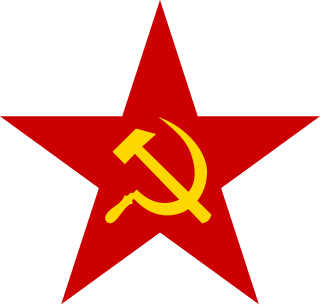 W
WAmicii URSS was a cultural association in interwar Romania, uniting left-wing and anti-fascist intellectuals who advocated a détente between their country and Joseph Stalin's Soviet Union. Created in the spring of 1934 by Petre Constantinescu-Iași, an activist of the previously outlawed Romanian Communist Party, the society took its inspiration from the French Amis de l'URSS and from the worldwide network. Actively encouraged and financed by the Comintern, Amicii URSS was viewed with suspicion by authorities — never officially registered, it was eventually banned on the orders of Premier Gheorghe Tătărescu on November 25, 1934. It ceased its activity after that point, but constituted a precedent for the Romanian Society for Friendship with the Soviet Union (ARLUS).
 W
WArcul de Triumf is a triumphal arch located in the northern part of Bucharest, on the Kiseleff Road.
 W
WThe Balkan Pact, or Balkan Entente, was a treaty signed by Greece, Turkey, Romania and Yugoslavia on 9 February 1934 in Athens, aimed at maintaining the geopolitical status quo in the region following World War I. To present a united front against Bulgarian designs on their territories, the signatories agreed to suspend all disputed territorial claims against each other and their immediate neighbors which followed in the aftermath of the war and a rise in various regional ethnic minority tensions. Other nations in the region that had been involved in related diplomacy refused to sign the document, including Italy, Albania, Bulgaria, Hungary and the Soviet Union. The pact became effective on the day that it was signed. It was registered in the League of Nations Treaty Series on 1 October 1934.
 W
WThe Crusade of Romanianism was an eclectic far-right movement in Romania, founded in 1934 by Mihai Stelescu. It originated as a dissident faction of the Iron Guard, Romania's main fascist movement, and was virulently critical of Guard leader Corneliu Zelea Codreanu. Stelescu reinterpreted nationalist ideology through the lens of anticapitalism and "humane" antisemitism, appropriating some ideas from communism and Italian fascism. The Crusade was famously associated with Panait Istrati, world-renowned novelist and dissident communist, who added into the mix of "Romanianism" some elements of libertarian socialism.
 W
WFAUR S.A. is an industrial engineering and manufacturing company based in Bucharest, Romania.
 W
WGândirea, known during its early years as Gândirea Literară - Artistică - Socială, was a Romanian literary, political and art magazine.
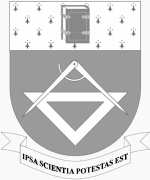 W
WThe Gheorghe Asachi Technical University is a public university located in Iași, Romania. Classified by the Ministry of Education as an advanced research and education university, it has the oldest tradition in Romania in engineering education. Gheorghe Asachi Technical University is a member of the Romanian Alliance of Technical Universities (ARUT).
 W
WThe Commemorative Cross to the Romanian Heroes of the First World War, also called the Heroes' Cross on Mount Cairaman is a monument built between 1926 and 1928 on Caraiman Peak at an altitude of 2,291 m located in Romania, in the Bucegi Mountains of the Southern Carpathians. It has a height of 36 metres (118 ft) and the nearest town is Buşteni. The name of the monument is "The Heroes' Cross", but it is popularly known as the "Cross on Caraiman".
 W
WÎntreprinderea Optică Română, often abbreviated by the acronym IOR, is a major optics company established in 1936 in Bucharest, Romania. IOR produces military and civilian grade optics and associated equipment for export and domestic production. The company is known in North America particularly for its rifle scopes, binoculars and other optics, which often accompany Romanian military equipment sold on the North-American market, such as the PSL rifle.
 W
WThe Internal Dobrujan Revolutionary Organisation or IDRO was a Bulgarian nationalist and revolutionary organisation active in Romanian Dobruja from 1923 to 1940. It was labeled 'a terrorist organization' by the Romanian government, though in Bulgaria it was regarded as a liberation movement.
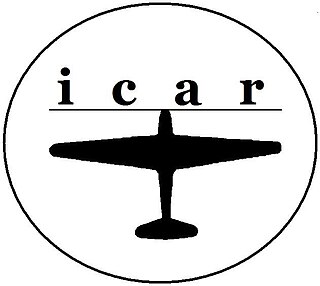 W
WÎntreprinderea de Construcții Aeronautice Românești,, was a Romanian aircraft manufacturer founded in 1932, in Bucharest. The company produced aircraft of its own design and under license.
 W
WThe Khotin Uprising was a Ukrainian-led insurrection in the far-northern tip of Bessarabia region, nestled between Bukovina and Podolia. It occurred on January 7–February 1, 1919, less than a year after Bessarabia's annexation by the Romanian Kingdom. The city it was centered on is now known as Khotyn (Хотин), and is located in Chernivtsi Oblast, Ukraine; in 1919, it was the capital of Hotin County, on the unofficial border between Romania and the Ukrainian People's Republic (UNR). The revolt was carried out by armed locals, mainly Ukrainian peasants, assisted by Cossack deserters from the Ukrainian People's Army and groups of Moldovans, with some support from local Bolsheviks and White Russians. It forms part of the Ukrainian War of Independence, though whether or not the UNR covertly supported it, beyond formally reneging it, is a matter of dispute. The role of Bolsheviks, which has been traditionally highlighted in Romanian and Soviet historiography alike, is similarly debated. The Khotin Uprising is therefore ambiguously linked to the Russian Civil War and the Ukrainian–Soviet War.
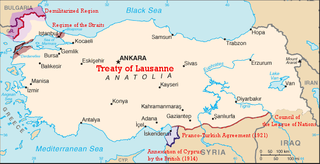 W
WThe Treaty of Lausanne was a peace treaty negotiated during the Lausanne Conference of 1922–23 and signed in the Palais de Rumine, Lausanne, Switzerland, on 24 July 1923. It officially settled the conflict that had originally existed between the Ottoman Empire and the Allied French Republic, British Empire, Kingdom of Italy, Empire of Japan, Kingdom of Greece, and the Kingdom of Romania since the onset of World War I. The original text of the treaty is in French. It was the result of a second attempt at peace after the failed Treaty of Sèvres. The earlier treaty had been signed in 1920, but later rejected by the Turkish national movement who fought against its terms. The Treaty of Lausanne ended the conflict and defined the borders of the modern Turkish Republic. In the treaty, Turkey gave up all claims to the remainder of the Ottoman Empire and in return the Allies recognized Turkish sovereignty within its new borders. It provided for the Greek-Turkish population exchange and allowed unrestricted civilian passage through the Turkish Straits.
 W
WThe Little Entente was an alliance formed in 1920 and 1921 by Czechoslovakia, Romania and the Kingdom of Serbs, Croats and Slovenes with the purpose of common defense against Hungarian revanchism and the prospect of a Habsburg restoration. France supported the alliance by signing treaties with each member country. The rapid growth of German power caused its collapse in 1938, and it never went into wartime operation.
 W
WThe Mausoleum of Mărășești is a memorial site in Romania containing remains of 5,073 Romanian soldiers and officers killed in the First World War and dedicated to the commemoration of the Battle of Mărășești and Romanian Army members who were killed during World War I.
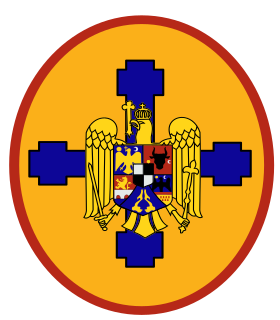 W
WThe National Renaissance Front was a Romanian political party created by King Carol II in 1938 as the single monopoly party of government following his decision to ban all other political parties and suspend the 1923 Constitution, and the passing of the 1938 Constitution of Romania. It was the party of Prime Ministers Armand Călinescu, Gheorghe Argeșanu, Constantin Argetoianu, Gheorghe Tătărescu and Ion Gigurtu, whose regimes were associated with corporatism and antisemitism. Largely reflecting Carol's own political choices, the FRN was the last of several attempts to counter the popularity of the fascist and antisemitic Iron Guard. In mid-1940, Carol reorganized the FRN into the more radical Party of the Nation, designed as a "totalitarian unity party". It effectively ceased to function the following year when the Parliament of Romania was dissolved.
 W
WThe National-Christian Defense League was a far-right political party of Romania formed by A. C. Cuza.
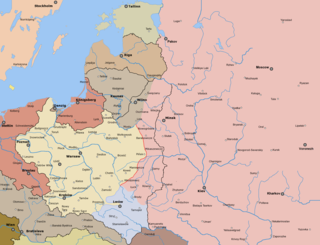 W
WThe Polish–Ukrainian War of November 1918 and 1919 was a conflict between the Second Polish Republic and Ukrainian forces. The conflict had its roots in ethnic, cultural and political differences between the Polish and Ukrainian populations living in the region. The war started in Eastern Galicia after the dissolution of the Austro-Hungarian Empire and spilled over into Chełm Land and Volhynia (Wołyń) regions formerly belonging to the Russian Empire, which were both claimed by the Ukrainian State and the Ukrainian People's Republic.
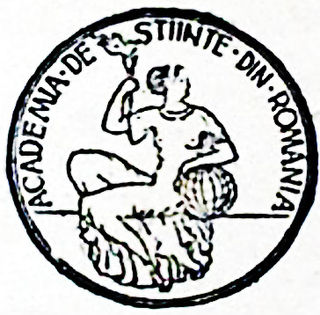 W
WThe Romanian Academy of Sciences was an institution established in Romania by a group of 26 scientists, dissatisfied with the imperfect organization of the Scientific Section of the Romanian Academy, which was left in the background, with only 12 seats to represent all sciences.
 W
WThe Romanian Bridgehead was an area in southeastern Poland, now located in Ukraine. During the invasion of Poland of 1939, on 14 September the Polish commander-in-chief Marshal of Poland Edward Rydz-Śmigły ordered all Polish troops fighting east of the Vistula to withdraw towards Lwów, and then to the hills along the borders with Romania and the Soviet Union.
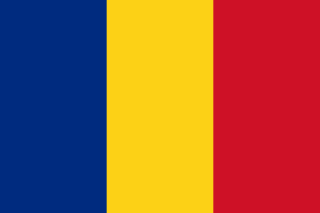 W
WThe Romanian concession in Sarandë was a territory in the Albanian town of Sarandë administered by Romania between 13 August 1934 and 7 April 1939.
 W
WThe Romanian occupation of Pokuttya took place in early 1919, when, as a result of alliances concluded between Romania and Poland, the former entered the southeastern corner of the former Austro-Hungarian ruled province of Galicia. During the interwar period, Romania was Poland's main ally in Eastern Europe. Both nations were bound by several treaties and history of this alliance dates back to the end of World War I and the Treaty of Versailles. However, to actively cooperate, governments in Bucharest and Warsaw emphasized the necessity of a shared border. Discussions about the border started in Paris some time at the beginning of 1919 and continued during the following months.
 W
WThe Romanian Radio Broadcasting Company, informally referred to as Radio Romania, is the public radio broadcaster in Romania. It operates FM and AM, and internet national and local radio channels. The local stations are branded under the Radio România Regional umbrella. Radio Romania International is the company's international radio station, broadcasting on two channels in Romanian, English, French, Aromanian, Spanish, German, Italian, Serbian, Russian, Ukrainian, Chinese, and Arabic.
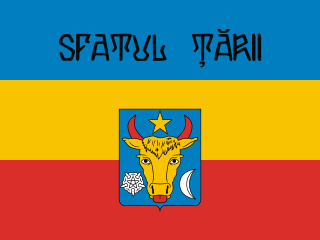 W
WSfatul Țării was a council that united political, public, cultural, and professional organizations in the greater part of the territory of the Governorate of Bessarabia in the disintegrating Russian Empire, which was transformed into a Legislative body and proclaimed the Moldavian Democratic Republic as part of the Russian Federative Republic in December 1917, and then union with Romania in April [O.S. March] 1918.
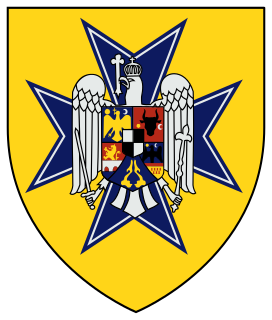 W
WStraja Țării was a youth organization in the Kingdom of Romania, created in 1935 by King Carol II to counter the growing influence the Iron Guard had over the youth of Romania. Its members were known as străjeri ("sentinels"), and used a form of the Roman salute as greeting.
 W
WThe Tatarbunary uprising was a Bolshevik-inspired peasant revolt that took place on 15–18 September 1924, in and around the town of Tatarbunary in Budjak (Bessarabia), then part of Romania, now part of Odessa Oblast, Ukraine. It was led by a pro-Soviet revolutionary committee which called for the creation of a Moldavian Soviet Republic and an end to "Romanian occupation".
 W
WThe Tomb of the Unknown Soldier is a monument located in Bucharest, Romania. Dedicated to the soldiers who died while fighting for Romania. It is one of many such national tombs.
 W
WThe Tour of Romania is a cycling competition held in Romania. It is organised as 2.2 race on the UCI Europe Tour.
 W
WThe Treaty of Neuilly-sur-Seine required Bulgaria to cede various territories, after Bulgaria had been one of the Central Powers defeated in World War I. The treaty was signed on 27 November 1919 at Neuilly-sur-Seine, France.
 W
WThe Treaty of Saint-Germain-en-Laye was signed on 10 September 1919 by the victorious Allies of World War I on the one hand and by the Republic of German-Austria on the other. Like the Treaty of Trianon with Hungary and the Treaty of Versailles with Germany, it contained the Covenant of the League of Nations and as a result was not ratified by the United States but was followed by the US–Austrian Peace Treaty of 1921.
 W
WThe Treaty of Trianon was prepared at the Paris Peace Conference and was signed in the Grand Trianon Palace in Versailles on 4 June 1920. It formally ended World War I between most of the Allies of World War I and the Kingdom of Hungary. French diplomats played the major role in designing the treaty, with a mind to establishing French-led coalition of the newly formed nations. It regulated the status of the independent Hungarian state and defined its borders generally within the ceasefire lines established in November–December 1918 and left Hungary as a landlocked state that included 93,073 square kilometres (35,936 sq mi), 28% of the 325,411 square kilometres (125,642 sq mi) that had constituted the pre-war Kingdom of Hungary. The new Kingdom had a population of 7.6 million, 36% compared to the pre-war kingdom's population of 20.9 million. Though the areas that were allocated to neighbouring countries had a majority of non-Hungarians, in them lived 3.3 million Hungarians – 31% – who were now in a minority status. The treaty limited Hungary's army to 35,000 officers and men, and the Austro-Hungarian Navy ceased to exist. These decisions and their consequences has been the cause of deep resentment in Hungary ever since.
 W
WThe Union of Transylvania with Romania was declared on 1 December 1918 by the assembly of the delegates of ethnic Romanians held in Alba Iulia. The Great Union Day, celebrated on 1 December, is a national holiday in Romania that commemorates this event. The holiday was established after the Romanian Revolution, and commemorates the unification not only of Transylvania, but also of Bessarabia and Bukovina and parts of Banat, Crișana and Maramureș with the Romanian Kingdom. Bessarabia and Bukovina had joined with the Kingdom of Romania earlier in 1918.
 W
WViaţa Basarabiei is a Romanian-language periodical from Chişinău, Moldova. Originally a literary and political magazine, published at a time when the Bessarabia region was part of Romania, it was founded in 1932 by political activist Pan Halippa and writer Nicolai Costenco. At the time, Viaţa Basarabiei was primarily noted for rejecting the centralism of Greater Romanian governments, to which they opposed more or less vocal Bessarabian regionalist demands and a nativist ethos.